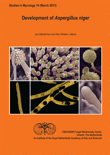
STUDIES IN MYCOLOGY
Scope & Guideline
Advancing Mycological Knowledge for a Sustainable Future
Introduction
Aims and Scopes
- Taxonomy and Systematics of Fungi:
The journal emphasizes the classification, reclassification, and systematic organization of various fungal taxa, including both well-known and obscure groups. This includes detailed studies on genera and species, providing updated classifications based on phylogenetic analyses. - Phylogenetic and Molecular Research:
A core focus of the journal is the application of molecular techniques to resolve phylogenetic relationships among fungi. This includes multi-locus phylogenetic studies and genomic analyses that contribute to a deeper understanding of fungal evolution. - Ecological and Biogeographical Studies:
Research published in this journal often explores the ecological roles of fungi within various environments, including their interactions with plants and other organisms, as well as their distribution patterns across different geographical regions. - Novel Species and Genera Descriptions:
The journal frequently publishes articles that describe new species and genera of fungi, highlighting the ongoing discovery of fungal diversity in under-studied regions, thus contributing to the overall knowledge of mycological biodiversity. - Fungal Pathogens and Biotechnological Applications:
There is a significant focus on the study of fungal pathogens, particularly those affecting plants and humans, as well as the potential biotechnological applications of fungi in various industries, including agriculture and medicine.
Trending and Emerging
- Genomic and Phylogenomic Approaches:
There is a noticeable increase in studies employing genomic and phylogenomic techniques to explore fungal diversity and evolutionary relationships. This trend reflects the broader movement in biological sciences towards high-throughput sequencing and comprehensive genetic analysis. - Focus on Fungal Biodiversity in Under-Studied Regions:
Recent publications highlight a growing interest in documenting fungal diversity in regions that have been historically overlooked, such as parts of Asia. This reflects a commitment to uncovering the full scope of fungal biodiversity globally. - Integration of Molecular and Ecological Data:
Emerging themes show a trend towards integrating molecular data with ecological studies, providing a more holistic view of fungal roles in ecosystems and their interactions with other organisms, which enhances our understanding of their ecological significance. - Taxonomic Revisions Based on Advanced Techniques:
The journal has increasingly published articles on taxonomic revisions that utilize advanced molecular techniques, indicating a shift towards more dynamic and accurate classifications that challenge traditional taxonomic frameworks. - Pathogenicity and Host Interaction Studies:
There is a growing focus on understanding the pathogenicity of fungi and their interactions with hosts, particularly in the context of emerging fungal diseases and their implications for agriculture and health.
Declining or Waning
- Classical Morphological Studies:
There seems to be a waning emphasis on purely morphological studies of fungi, as the field increasingly adopts molecular tools for taxonomy and identification, which provide more robust and reproducible results. - General Reviews of Well-Established Groups:
The frequency of comprehensive reviews on well-established fungal groups, such as common genera like Aspergillus or Penicillium, appears to be decreasing. This may indicate a shift towards more focused studies that contribute new insights rather than reiterating existing knowledge. - Traditional Methods in Fungal Ecology:
Research utilizing traditional ecological methods, such as simple observational studies without molecular tools, is becoming less common, as there is a growing preference for integrative approaches that combine ecological data with genetic information.
Similar Journals
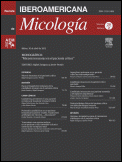
REVISTA IBEROAMERICANA DE MICOLOGIA
Illuminating the World of Fungi and Their ImpactREVISTA IBEROAMERICANA DE MICOLOGIA, published by the ASOCIACION ESPANOLA MICOLOGIA-AEM, is a vital resource for those engaged in the study of mycology and infectious diseases. With a history spanning from 1996 to 2024, this journal is committed to advancing knowledge in the field through the dissemination of high-quality research articles, reviews, and case studies. Although it currently features a Q3 ranking in Infectious Diseases and a Q4 ranking in Microbiology for 2023, its impact is significant given the niche focus it serves, catering to a specialized audience of researchers and practitioners. While access is not open, the journal continues to be a preferred platform for scholarly communication among professionals in Spain and beyond. The editorial office, located in Bilbao, serves as the hub for rigorous peer-review and publication processes, ensuring that the latest advancements and findings in the field of mycology are effectively shared within the scientific community.

Acta Botanica Mexicana
Pioneering plant science for a sustainable future.Acta Botanica Mexicana is a premier journal published by Instituto de Ecología AC, dedicated to advancing research in the fields of ecology, plant science, and biological sciences. With an E-ISSN of 2448-7589, this open-access journal facilitates extensive dissemination of scientific findings, ensuring that knowledge is accessible to researchers, professionals, and students worldwide. Established in 2008, Acta Botanica Mexicana has earned a notable reputation, achieving a Q3 ranking in plant science and a Q4 ranking in ecology and evolution for 2023. This positioning underscores its commitment to publishing high-quality research that addresses vital issues in ecological and botanical studies. With a focus on innovative methodologies and pragmatic solutions, the journal invites contributors to share their insights and findings, thus enriching the academic landscape and fostering collaborations that drive the field forward. The journal is based in Michoacán, Mexico, and serves as a key hub for researchers engaging with the challenges and intricacies of plant and ecological studies.
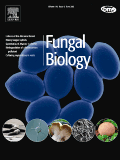
Fungal Biology
Unlocking the Secrets of Fungi for a Sustainable FutureFungal Biology, published by Elsevier Science Ltd, is a premier journal dedicated to advancing the field of mycology and its interdisciplinary applications. With an ISSN of 1878-6146 and E-ISSN 1878-6162, this journal serves as a vital platform for researchers and professionals interested in the ecological, evolutionary, and genetic aspects of fungi, as well as their implications in infectious diseases and plant sciences. As of 2023, it proudly holds a Q2 ranking in Ecology, Evolution, Behavior and Systematics and Plant Science, and a Q3 ranking in Genetics and Infectious Diseases, highlighting its significant contribution to these domains. The journal boasts an impressive Scopus rank, including a percentile of 83rd in Ecological studies, ensuring that published research reaches a wide audience and impacts ongoing discourse in the field. With open access options, Fungal Biology encourages the dissemination of high-quality research, aimed to foster collaboration and innovation among scholars and practitioners. With its convergence of knowledge from 2010 to 2024, this journal is instrumental for those advancing the understanding of fungal biology and its myriad applications in environmental and health sciences.

Frontiers in Fungal Biology
Unveiling Nature's Fungal MysteriesFrontiers in Fungal Biology is an innovative academic journal dedicated to advancing the field of mycology and its interdisciplinary connections, published by FRONTIERS MEDIA SA. With an E-ISSN of 2673-6128, this journal focuses on exploring diverse aspects of fungal biology, including ecological roles, evolutionary processes, and interactions with other organisms. Since its inception in 2020, Frontiers in Fungal Biology has garnered attention within the scientific community, earning a commendable Q2 ranking in both Ecology, Evolution, Behavior and Systematics, and Environmental Science categories in 2023, alongside respectable Q3 rankings in Infectious Diseases and Microbiology. The journal is committed to open access principles, making cutting-edge research freely available to a global audience, promoting knowledge sharing and collaboration. By providing a platform for rigorous research and impactful discussions, Frontiers in Fungal Biology aims to enhance the understanding of fungi and their significant roles in ecosystems, health, and biotechnology, appealing to researchers, professionals, and students alike.

Medical Mycology Journal
Bridging Research and Practice in Medical MycologyMedical Mycology Journal is a leading publication in the field of medical mycology, dedicated to advancing the understanding and treatment of fungal infections. Published by the Japanese Society of Medical Mycology, this journal serves as an essential resource for researchers, clinicians, and students alike. With an ISSN of 2185-6486 and an E-ISSN of 2186-165X, it aims to provide high-quality peer-reviewed articles focusing on clinical and epidemiological studies, diagnosis, and novel therapeutic approaches related to fungal pathogens. Operating under a Q3 ranking in Infectious Diseases and having consistently published significant findings since its establishment in 2011, the journal is pivotal for those working at the intersection of mycology and infectious disease management. Although currently non-open access, the journal's insights are vital for expanding knowledge in this critical area of healthcare, addressing pressing global health challenges linked to fungal infections.
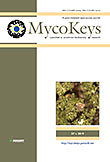
MycoKeys
Innovating mycology: bridging science and sustainability.MycoKeys, published by PENSOFT PUBLISHERS, is a leading open-access journal dedicated to advancing the understanding of fungal biology and its diverse implications within agricultural, ecological, and biological sciences. With its ISSN 1314-4057 and E-ISSN 1314-4049, this journal has achieved remarkable academic prestige, reflected in its 2023 Scopus rankings placing it in the first quartile (Q1) across several categories, including Agricultural and Biological Sciences (miscellaneous), Ecology, Evolution, Behavior and Systematics, and Plant Science. MycoKeys provides a platform for researchers, professionals, and students interested in the latest findings and methodologies regarding fungi, their environments, and their interactions within various ecosystems. Since its transition to open access in 2011, the journal has championed the dissemination of high-quality research to a global audience, fostering collaboration and innovation in mycology. With a publishing history that converges from 2015 to 2024, MycoKeys remains a vital resource for those committed to exploring the multifaceted roles fungi play in our world.
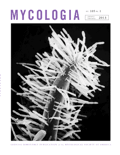
MYCOLOGIA
Exploring the intricate world of fungi and their ecosystems.MYCOLOGIA, published by Taylor & Francis Inc, is a prestigious journal that has been at the forefront of fungal research since its inception, with converging years of publication from 1945 to 2024. This interdisciplinary journal, identified by ISSN 0027-5514 and E-ISSN 1557-2536, stands out in various scientific categories, achieving Q1 rankings in Ecology, Evolution, Behavior and Systematics, as well as Plant Science, alongside strong performances in Cell Biology and Molecular Biology categories. With an impact factor that reflects its significance in the field, MYCOLOGIA appeals to a diverse audience, including researchers, professionals, and students dedicated to advancing the understanding of fungal biology and its ecological implications. Notably, while it does not currently operate under an Open Access model, the journal remains a vital resource for those pursuing groundbreaking discoveries in mycology and related disciplines.
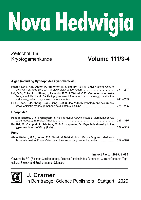
NOVA HEDWIGIA
Nurturing Knowledge in the Heart of Natural SciencesNOVA HEDWIGIA is a premier journal dedicated to the fields of ecology, evolution, behavior, and systematics, as well as plant sciences. Published by GEBRUDER BORNTRAEGER in Germany, this journal serves as a vital platform for researchers, professionals, and students seeking to disseminate and engage with high-quality studies and findings. With an ISSN of 0029-5035 and an E-ISSN of 2363-7188, NOVA HEDWIGIA has established its significance within these disciplines, reflected in its current Scopus rankings, which place it in the third quartile of both ecology and plant science categories. This esteemed publication has contributed to the advancement of knowledge and innovation since its inception in 1993, continuing through 2024, offering valuable resources for an ever-evolving academic landscape. Researchers looking to contribute to ecological studies or plant sciences will find NOVA HEDWIGIA an ideal venue for sharing their work, nurturing their academic pursuits, and joining a community passionate about the natural sciences.

SYDOWIA
Advancing Ecological Insights for a Sustainable FutureSYDOWIA is a prestigious academic journal based in Austria, published by Verlag Ferdinand Berger Sohne Gesellschaft mbH, that has been a cornerstone of scientific publishing since its establishment in 1996. With an ISSN of 0082-0598, SYDOWIA focuses on critical research in the fields of Ecology, Evolution, Behavior and Systematics as well as Plant Science, earning a notable classification in Category Quartiles with Q3 in Ecology-related disciplines and Q2 in Plant Science for 2023. The journal’s strategic insights into agricultural and biological sciences have secured a place within the Scopus rankings, where it holds the position of #191 out of 516 in Plant Science and #278 out of 721 in Ecology categories—reflecting its growing influence with a percentile standing of 63rd and 61st, respectively. Although SYDOWIA is not an Open Access journal, it continues to thrive in delivering scholarly articles that promote advancement and innovation in ecological and botanical research. Researchers, professionals, and students alike can rely on SYDOWIA as a vital resource for disseminating knowledge and fostering exploration in these essential scientific domains.

MYCOPATHOLOGIA
Elevating research standards in mycology and plant health.MYCOPATHOLOGIA, published by Springer in the Netherlands, stands as a pivotal journal in the fields of mycology, plant science, and veterinary microbiology. With its extensive history dating back to 1938, this journal has consistently contributed to the understanding of fungal pathogens and their impact on both agriculture and animal health. It currently holds impressive rankings in Scopus, including Q1 status in Agronomy and Crop Science, and Q2 rankings in Applied Microbiology and Biotechnology, demonstrating its influence and rigor in the scientific community. Researchers and professionals benefit from its curated, high-quality studies which address critical areas such as plant-pathogen interactions and veterinary mycology. While not open access, MYCOPATHOLOGIA emphasizes comprehensive research output and serves as a vital resource for advancing knowledge and fostering innovation in its disciplines. The journal remains committed to disseminating valuable insights that drive forward both academic inquiry and practical applications in related fields, ensuring its relevance and importance in contemporary research.